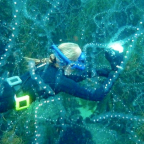
Dozens of the 127 proposed marine conservation zones, including one on the Isle of Wight, were judged by Government advisers to be at high risk but wildlife groups were left dismayed when it emerged they would not be immediately protected.
One such site is Bembridge, a coastal area to the east of the Isle of Wight, which is made up of a mosaic of habitats from limestone reefs to sand and gravel beds.
It is home to a number of important species and habitats which the marine conservation zones are focused on protecting, including maerl and peacock’s tail seaweed, kaleidoscope stalked jellyfish, short and long snouted seahorses and seagrass beds.
Sea bream breed in the thin layer of gravel in the bay, while the rocky areas are habitat for sponges and juvenile edible crabs, which can be seen s...
Read More












Social Profiles